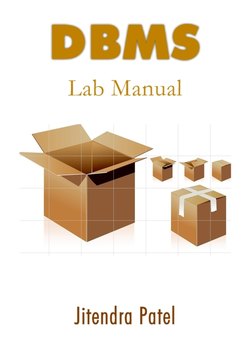DBMS Lab Manual

Реклама. ООО «ЛитРес», ИНН: 7719571260.
Оглавление
Jitendra Inc. Patel. DBMS Lab Manual
DBMS LAB MANUAL
Copyright © 2012 Jitendra Patel
Practical 1: Create synonyms, sequence and index
Dropping a synonym
What is an Index?
Create an Index
Drop an Index
Practical 2: Create, alter and update views
Creating a VIEW
Updating a VIEW
Dropping a VIEW
Practical 3: Create PL/SQL programmes using cursors, control structures, exception handling
Conditional Statements in PL/SQL
Iterative Statements in PL/SQL
1) Simple Loop
2) While Loop
3) FOR Loop
1) What is Exception Handling?
2) Structure of Exception Handling
3) Types of Exception
a) Named System Exceptions
b) Unnamed System Exceptions
c) User-defined Exceptions
RAISE_APPLICATION_ERROR ( )
Practical 4: Create simple triggers. What is a Trigger?
Syntax of Triggers
After Statement-Level Trigger
Before Row-Level Trigger
Practical 5: Create package using procedure and functions. Stored Procedures. What is a Stored Procedure?
How to execute a Stored Procedure?
Functions. What is a Function in PL/SQL?
How to execute a PL/SQL Function?
Parameters in Procedure and Functions. How to pass parameters to Procedures and Functions in PL/SQL ?
Practical 6: Create users, Grant and revoke privileges. CREATING A USER
SQL GRANT Command
SQL REVOKE Command:
Privileges and Roles:
Creating Roles:
Practical 7: Practice on Normalizations
Exercise:
Отрывок из книги
The Structured Query Language (SQL) is a computer language for accessing and manipulating databases.
The fundamental concept is to think of the data as being stored in one or more tables. When a request is made to retrieve data from these tables, which is called a "query", the resultant output is also presented in as table.
.....
If you omit the MAXVALUE option, your sequence will automatically default to:
MAXVALUE 999999999999999999999999999
.....